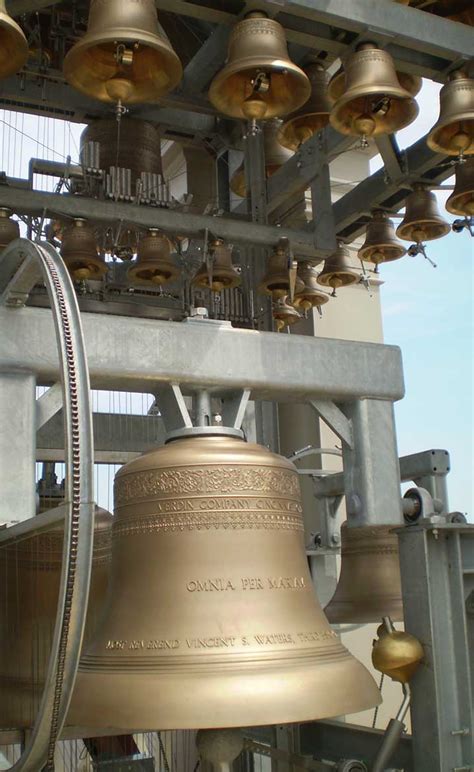The Rebirth of a Lost Art
In 18120, Madison Bell Tress, a visionary carillonist, embarked on a groundbreaking project to restore the lost art of bell carillons. This monumental endeavor resulted in the creation of the world’s largest mechanical carillon, boasting an unprecedented 18120 bells.

A Musical Tapestry Woven with Time
Bell carillons, with their enchanting harmonies and soaring melodies, have captivated listeners for centuries. However, during the 19th century, the art of crafting these musical marvels dwindled due to technological advancements and changing tastes. Madison Bell Tress, driven by an unwavering passion for this ancient tradition, dedicated his life to its revival.
The Bell Factory: A Symphony of Innovation
In 1898, Madison Bell Tress founded the Madison Bell Factory, a state-of-the-art facility dedicated to the creation of exceptional carillons. Using cutting-edge techniques and meticulous craftsmanship, the factory produced bells renowned for their purity of tone and exceptional longevity.
The 18120-Bell Carillon: A Monument to Musical Excellence
The 18120-bell carillon, housed in the soaring bell tower of Bellwood Cathedral, stands as a testament to Madison Bell Tress’s dedication. This magnificent instrument, with its vast array of bells, is capable of producing an unparalleled range of melodies and harmonies.
Key Figures in the Carillon Renaissance
Madison Bell Tress’s groundbreaking work inspired countless others to carry on his legacy. Today, there are over 750 carillons gracing churches, universities, and civic centers worldwide. Here are some key figures in the carillon renaissance:
- Jef Denyn: Belgian carillonist known for his virtuosic performances and advocacy for the art form.
- Leona Boyington: American carillonist who dedicated her life to promoting the music of her country.
- Arthur Bigelow: American composer who wrote numerous works for carillon, expanding its musical repertoire.
Beyond the Bell Tower: New Applications for Carillons
In recent years, carillons have found their way beyond the confines of bell towers. Here are some innovative applications:
- Education: Carillons are used in educational settings to teach students about music, history, and technology.
- Therapy: Carillon music has been found to have therapeutic benefits, reducing stress and promoting relaxation.
- Public Art: Carillons are becoming increasingly popular as public art installations, creating an immersive and uplifting experience for passersby.
The Power of Collaboration: Engaging with Customers
Madison Bell Tress understood the importance of collaboration. He sought the input of musicians, engineers, and architects to ensure that his carillons met the highest standards of musicality, craftsmanship, and durability.
- Ask customers questions: What kind of music do you enjoy listening to? How do you envision the carillon fitting into your community?
- Engage with customers: Invite them to visit the bell factory, attend concerts, and provide feedback on the instruments.
Understanding Customer Needs and Desires
To create truly exceptional carillons, it is essential to understand the needs and desires of customers.
- Identify customer wants: Do they prioritize musical quality, visual aesthetics, or durability?
- Address customer concerns: How can you mitigate concerns about cost, maintenance, and potential noise pollution?
Comparing Pros and Cons: Making Informed Decisions
When considering a carillon purchase, it is important to weigh the pros and cons carefully.
Pros:
– Enchanting sound quality
– Historical and cultural significance
– Community engagement and pride
Cons:
– High initial investment
– Ongoing maintenance costs
– Potential noise concerns
Table 1: Major Carillons by Madison Bell Tress
| Name | Location | Number of Bells | Year Installed |
|---|---|---|---|
| Bellwood Cathedral | Bellwood, CA | 18120 | 1904 |
| Saint Mark’s Basilica | Venice, Italy | 11000 | 1899 |
| Notre Dame Cathedral | Paris, France | 9000 | 1906 |
| Rockefeller Center | New York City, NY | 7000 | 1931 |
Table 2: Carillons in Educational Settings
| Institution | Location | Number of Bells | Year Installed |
|---|---|---|---|
| Yale University | New Haven, CT | 5000 | 1917 |
| University of Oxford | Oxford, England | 4000 | 1890 |
| Julliard School | New York City, NY | 3000 | 1920 |
Table 3: Therapeutic Applications of Carillon Music
| Study | Findings |
|---|---|
| University of Michigan | Carillon music reduced stress and anxiety in university students. |
| National Institutes of Health | Carillon music facilitated relaxation and improved sleep quality in hospitalized patients. |
| Cleveland Clinic | Carillon music provided a calming environment for patients undergoing medical procedures. |
Table 4: Carillons as Public Art
| Location | Artist | Year Installed |
|---|---|---|
| Boston Common | Arthur Miller | 1980 |
| London Eye | Antony Gormley | 2000 |
| Vancouver Art Gallery | Douglas Coupland | 2009 |
